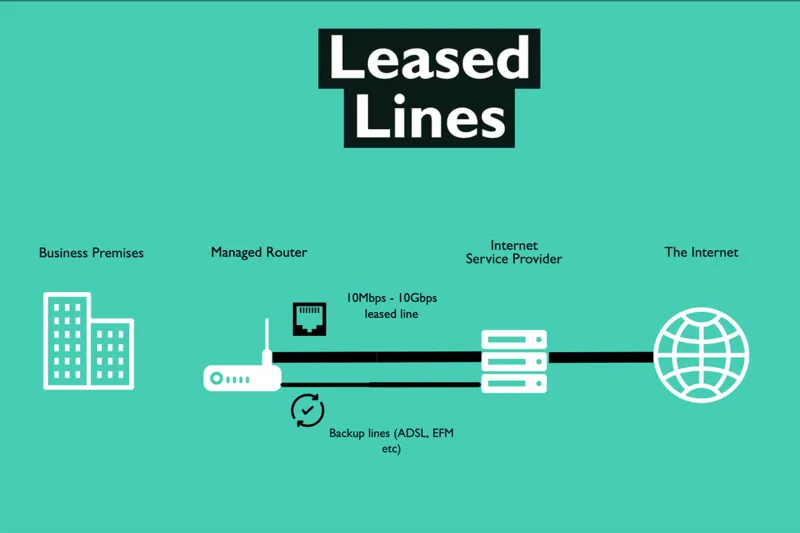Every modern businessman wants a fast internet connection because the mostly business depends upon the internet telephone, email and cloud phone system. It means a lot of businesses would not be able to work if they don’t have an internet connection. However, many organizations have yet to decide on the technology they will employ for connectivity. Do any other technology stack up when it comes to cost, dependability, and speed now that high-speed consumer and commercial fiber broadband is accessible across a big portion of the country?
This blog examines Ethernet Leased Lines (efm), including what they are (if you didn’t previously know), how they function, the applications for such technology, and whether or not you should explore them for your company.
What are leased lines?
Leased lines are symmetrical download and upload speeds that are dedicated to a fixed bandwidth connection. Leased lines do not share bandwidth with other consumers/businesses since they are dedicated connections. Unlike broadband, where capacity is shared among a number of consumers/businesses, leased lines do not share bandwidth with other consumers/businesses.
The term “leased” refers to a connection that is leased directly from the ISP, assuring a point-to-point connection between the ISP and your company site, which is often accomplished using fiber optic cables. As a result, compared to traditional broadband, this gives a significantly more stable and resilient means to connect to the internet. However, because leased lines are typically far more expensive than regular broadband, they are not always the best option for a company.
How does a leased line work?
By delivering light pulses down a fiber optic cable, a Fiber Ethernet Leased Line uses the same technology as fiber broadband. A leased line, on the other hand, is a connection leased from an ISP to a business, making it personal to you rather than shared with other users. These connections provide up to 1Gbps symmetrical speeds. Other leased line kinds differ in terms of the technology employed, as well as the pricing and bandwidth available.
Multiple copper pairs are used in Ethernet in the First Mile (EFM) to provide economical but dependable connectivity. Copper Pairs (between 2 and 8 lines) are twisted together to ensure balanced download/upload rates.
If one of the Copper Pairs fails or degrades, the other pairs will take up and continue to give internet connectivity.
The other technology is FTTC Ethernet, which uses a combination of fibre (from the ISP to the cabinet) and copper (depending on how close your business is to these cabinets) and local fiber-based cabinets (depending on how close your business is to these cabinets) (from the cabinet to your business). The speed you obtain with this technology is determined by how close you are to the cabinet; the longer the copper line, the slower it becomes. However, because this is a leased line, you will have your own dedicated connection.
High Reliability
If your organization relies heavily on internet access, leased lines provide the stability and security you need to keep your operations running even in the most adverse conditions. Service Level Agreements (SLAs) are included with leased line agreements, and they specify the minimum uptime of your connection as well as guaranteed times to keep you connected as much as possible. Leased lines are perfect if you want the most reliable connection for your business, especially when combined with a backup connection.
What do you need to consider about the Leased Line in 2022?
Thinking that leased lines are the way to go? Great, but it’s worth considering a few things before making that decision as it’s very much dependent on your current context. Here are a few things we’d recommend.
It’s worth thinking about whether you can justify updating your technology if you already have it set up.
We would be hesitant to recommend leased lines to you if you are currently using broadband and have no real issues with the service you are receiving; however, if you have a suitable use case or requirement that your current broadband connectivity cannot meet, we would encourage you to investigate leased lines as a business option.









